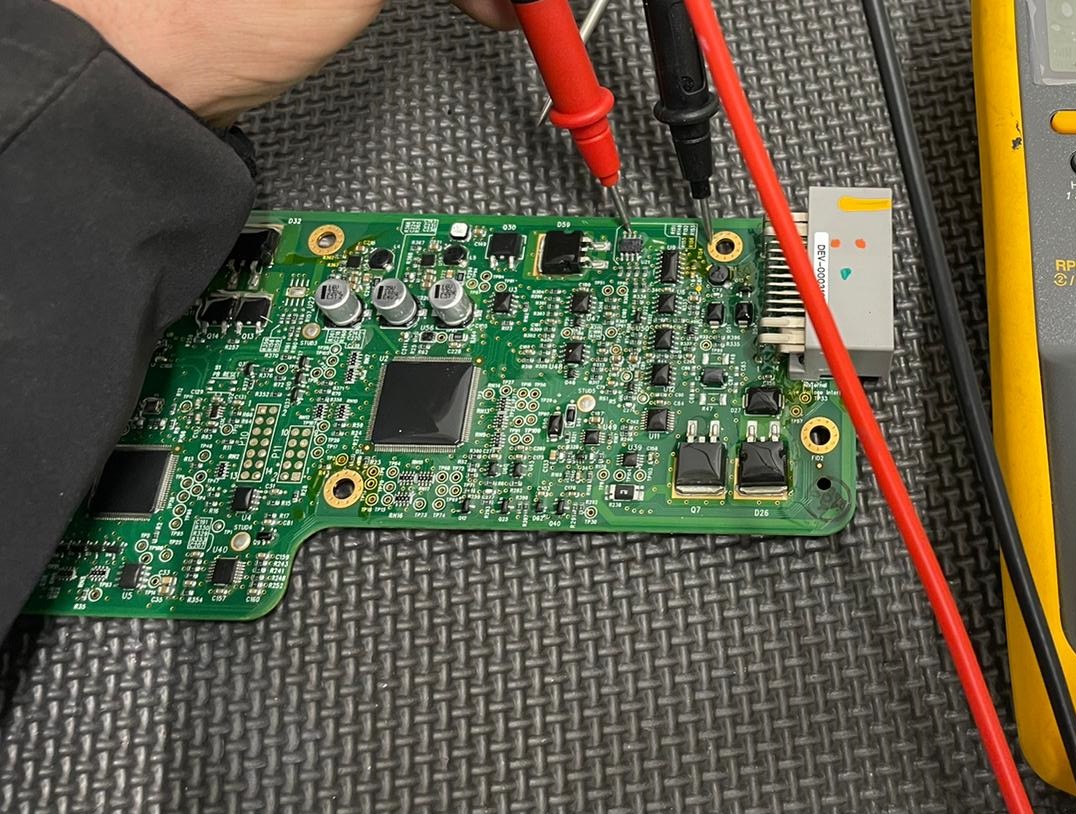Hi

I got P85 out of warranty with unique battery issue. Let me start:
2 monts ago, battery reported BMS_u029 error - "Maximum battery charge level reduced".
We measuerd battery, we checked BMS logs and determined that Brick 6 in block 6 is bad, it has little self discharge. Tesla call that in their garage documents SHORT TO BRICK
Ok, no problem, we took it off, open, measuer on bench, 196Ah on block 6. Brick 6 we located 2 cells bad, changed them. Again checked self discharge dooring 6 day period and everything is ok. Returned everything back and car drives but error still there. We cant get rid of BMS_u019.
Tesla says clearly when error apears:
"The battery management system BMS has deteceted a potential weak short in a pack. BMS Detected the short by comparing the voltage change across all the bricks between two points when the pack is "resting". This was repeatedly done at different state of charge SOC levels to confirm the presence of a potential cell with an excessive self discharge."
And they say it is first triggered by BMS_a117_sw_delta_SOC_Weak_short
In another article they mention this BMS_u029 will apear again even if they change battery and some steps needed to be done.
1-
2-
3- "From Garage>tesladex infi, search for "nbms msn" and confirm the MSN value corresponds to the replacement pack msn currently installed within the vehicle.
* for vin to vin repair, the MSN vill be the sam as before
* if the MSN within garage does NOT match what is installed on the vehicle, do not perform the following steps below. Escalate the session as the manufacturing data hasnt been updated on the vehicle.
4- Confirm from Garage>Tasks that a Job Name "BMSSetDataValues" was run successfuly on the vehicle with different arguments from before the pack replacement.
*if a job name "BMSSetDataValues" was not ran......
Lot of other text copying some HEX value ....
Does anyone knows how to remove this remote service alert?
I tried all BMS resets available. I tried clear VAR and HOME to try blank tegra in system, didnt help. Tried Factory reset.
Need help and i would be happy to reward it.
I got P85 out of warranty with unique battery issue. Let me start:
2 monts ago, battery reported BMS_u029 error - "Maximum battery charge level reduced".
We measuerd battery, we checked BMS logs and determined that Brick 6 in block 6 is bad, it has little self discharge. Tesla call that in their garage documents SHORT TO BRICK
Ok, no problem, we took it off, open, measuer on bench, 196Ah on block 6. Brick 6 we located 2 cells bad, changed them. Again checked self discharge dooring 6 day period and everything is ok. Returned everything back and car drives but error still there. We cant get rid of BMS_u019.
Tesla says clearly when error apears:
"The battery management system BMS has deteceted a potential weak short in a pack. BMS Detected the short by comparing the voltage change across all the bricks between two points when the pack is "resting". This was repeatedly done at different state of charge SOC levels to confirm the presence of a potential cell with an excessive self discharge."
And they say it is first triggered by BMS_a117_sw_delta_SOC_Weak_short
In another article they mention this BMS_u029 will apear again even if they change battery and some steps needed to be done.
1-
2-
3- "From Garage>tesladex infi, search for "nbms msn" and confirm the MSN value corresponds to the replacement pack msn currently installed within the vehicle.
* for vin to vin repair, the MSN vill be the sam as before
* if the MSN within garage does NOT match what is installed on the vehicle, do not perform the following steps below. Escalate the session as the manufacturing data hasnt been updated on the vehicle.
4- Confirm from Garage>Tasks that a Job Name "BMSSetDataValues" was run successfuly on the vehicle with different arguments from before the pack replacement.
*if a job name "BMSSetDataValues" was not ran......
Lot of other text copying some HEX value ....
Does anyone knows how to remove this remote service alert?
I tried all BMS resets available. I tried clear VAR and HOME to try blank tegra in system, didnt help. Tried Factory reset.
Need help and i would be happy to reward it.




